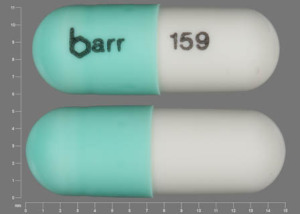Chlordiazepoxide Dosage
Medically reviewed by Drugs.com. Last updated on Jul 23, 2025.
Applies to the following strengths: 5 mg; 10 mg; 25 mg; 100 mg
Usual Adult Dose for:
Usual Geriatric Dose for:
Usual Pediatric Dose for:
Additional dosage information:
Usual Adult Dose for Anxiety
Mild to moderate anxiety: 5 or 10 mg orally 3 to 4 times a day
Severe anxiety: 20 or 25 mg orally 3 or 4 times a day
Comments:
- Doses should be individualized to provide maximum beneficial effects.
- Efficacy of long-term management in patients with anxiety (e.g., greater than 4 months) has not been established.
Uses:
- Relief of mild, moderate, and severe anxiety disorders
- Management of anxiety disorders
- Short-term relief of symptoms of anxiety
Usual Adult Dose for Light Sedation
On days preceding surgery: 5 to 10 mg orally 3 to 4 times per day
If used as preoperative medication: 50 to 100 mg IM once 1 hour before surgery
Use: Preoperative apprehension and anxiety
Usual Adult Dose for Alcohol Withdrawal
50 to 100 mg orally, followed by repeated doses as needed until agitation is controlled
- Maximum dose: 300 mg orally per day
Comments:
- Parenteral formulations are usually used for the relief of withdrawal symptoms of acute alcoholism.
- After agitation is controlled, the dosage should be reduced to maintenance levels.
Use: Withdrawal symptoms of acute alcoholism
Usual Geriatric Dose for Anxiety
5 mg orally 2 to 4 times a day
Comments:
- Initial doses should be kept to 10 mg/day or less to decrease the risk of ataxia or oversedation.
- Doses should be individualized to provide maximum beneficial effects.
- Efficacy of long-term management in patients with anxiety (e.g., greater than 4 months) has not been established.
Uses:
- Relief of mild, moderate, and severe anxiety disorders
- Management of anxiety disorders
- Short-term relief of symptoms of anxiety
Usual Pediatric Dose for Anxiety
6 years and older: 5 mg orally 2 to 4 times a day
- This may be increased to 10 mg orally 2 to 3 times a day
Comments:
- Doses should be individualized to provide maximum beneficial effects.
- Efficacy of long-term management in patients with anxiety (e.g., greater than 4 months) has not been established.
Uses:
- Relief of mild, moderate, and severe anxiety disorders
- Management of anxiety disorders
- Short-term relief of symptoms of anxiety
Renal Dose Adjustments
Renal dysfunction: Use with caution
Liver Dose Adjustments
Liver dysfunction: Use with caution
Dose Adjustments
In the presence of debilitating disease: 5 mg orally 2 to 4 times a day
Comment: Initial doses should be kept to 10 mg/day or less to decrease the risk of ataxia or oversedation.
Uses:
- Relief of mild, moderate, and severe anxiety disorders
- Management of anxiety disorders
- Short-term relief of symptoms of anxiety
Patients who develop drowsiness, ataxia, or confusion: Dose adjustments should be considered.
Precautions
US BOXED WARNINGS:
RISKS FROM CONCOMITANT USE WITH OPIOIDS:
- Concomitant use of benzodiazepines and opioids may result in profound sedation, respiratory depression, coma, and death.
- Reserve concomitant prescribing of these drugs for use in patients for whom alternative treatment options are inadequate.
- Limit dosages and durations to the minimum required.
- Follow patients for signs and symptoms of respiratory depression and sedation.
Safety and efficacy have not been established in patients younger than 6 years; this drug is not recommended for use in these patients.
Consult WARNINGS section for additional precautions.
US Controlled Substance: Schedule IV
Dialysis
Data not available
Other Comments
Administration advice:
- Capsules should be taken with water and not be chewed.
Storage requirements:
- Protect from light.
General:
- Doses should be determined by patient response and clinical diagnosis.
- Anxiety/tension associated with the stress of everyday life usually does not require treatment with an anxiolytic.
- Patients should be periodically reassessed to determine the need for continued treatment, especially when they are symptom-free.
- Concomitant use with other psychotropic agents is generally not recommended; if necessary, the pharmacology of the agents should be considered prior to administration.
Monitoring:
- General: Patients with a history of alcohol or drug abuse, or patients with a marked personality disorder should be monitored frequently.
- Hematologic: Periodic blood counts
- Hepatic: Periodic liver function tests
- Psychiatric: Signs/symptoms of dependence
Patient advice:
- Patients should be cautioned against performing activities requiring complete mental alertness, such as operating machinery or driving a motor vehicle.
- Patients should be advised to avoid abrupt discontinuation of treatment; patients should be educated regarding the risks of tolerance, dependence, and rebound phenomena.
- Patients and caregivers of those who are taking concomitant opioid therapy should be told to immediately report profound central nervous system or respiratory depression.
- Patients should be told to avoid drinking alcohol or taking other drugs that may cause sleepiness or dizziness while taking this drug until they talk to their healthcare provider.
- If this drug is prescribed to a woman of childbearing potential, she should be warned to contact her physician regarding discontinuation if she intends to become pregnant or is pregnant.
More about chlordiazepoxide
- Check interactions
- Compare alternatives
- Pricing & coupons
- Reviews (209)
- Drug images
- Latest FDA alerts (1)
- Side effects
- During pregnancy
- Drug class: benzodiazepines
- Breastfeeding
- En español
Patient resources
Other brands
Professional resources
Other brands
Related treatment guides
See also:
Further information
Always consult your healthcare provider to ensure the information displayed on this page applies to your personal circumstances.


